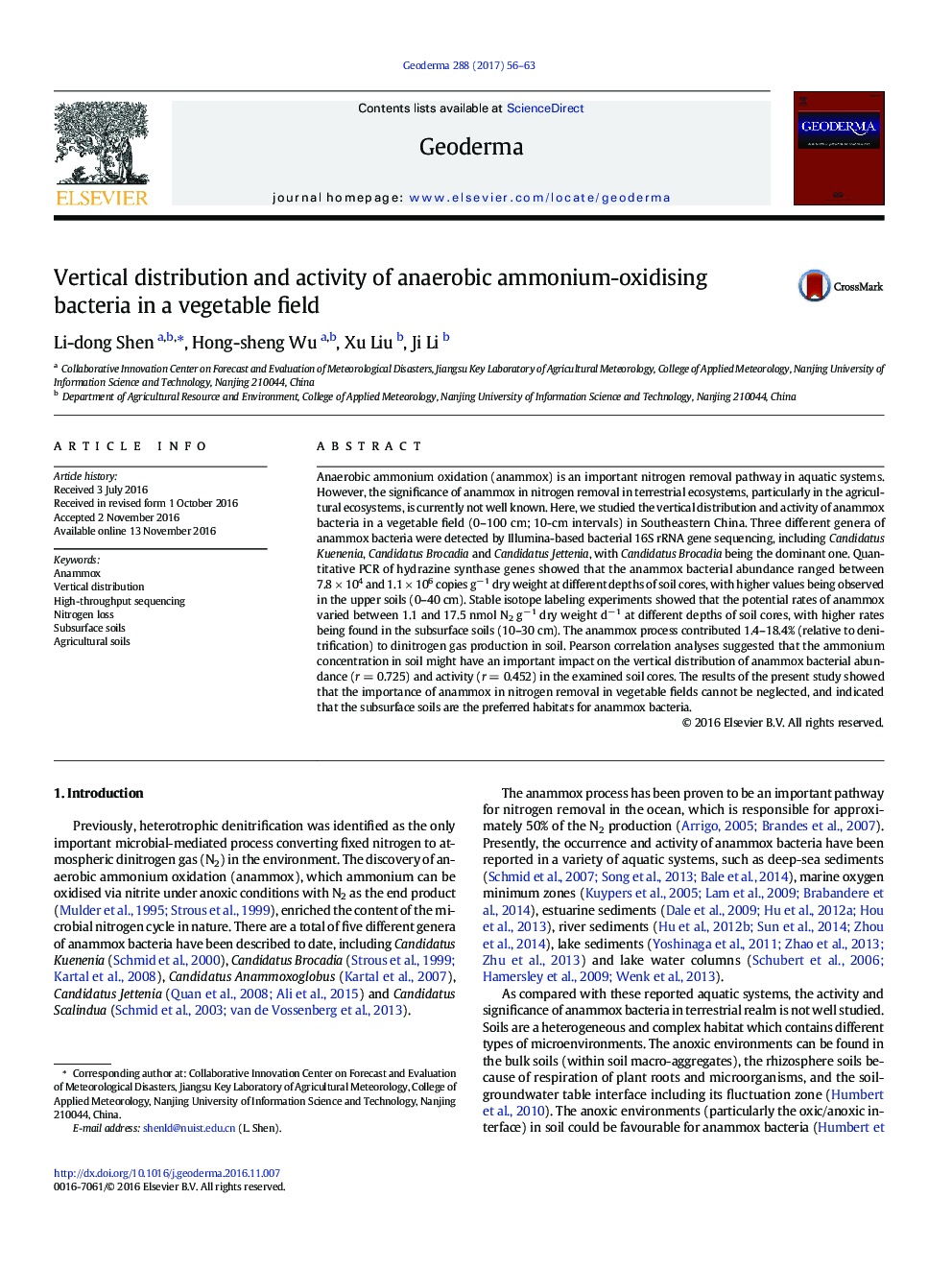| Article ID | Journal | Published Year | Pages | File Type |
|---|---|---|---|---|
| 5770486 | Geoderma | 2017 | 8 Pages |
Abstract
Anaerobic ammonium oxidation (anammox) is an important nitrogen removal pathway in aquatic systems. However, the significance of anammox in nitrogen removal in terrestrial ecosystems, particularly in the agricultural ecosystems, is currently not well known. Here, we studied the vertical distribution and activity of anammox bacteria in a vegetable field (0-100 cm; 10-cm intervals) in Southeastern China. Three different genera of anammox bacteria were detected by Illumina-based bacterial 16S rRNA gene sequencing, including Candidatus Kuenenia, Candidatus Brocadia and Candidatus Jettenia, with Candidatus Brocadia being the dominant one. Quantitative PCR of hydrazine synthase genes showed that the anammox bacterial abundance ranged between 7.8 Ã 104 and 1.1 Ã 106 copies gâ 1 dry weight at different depths of soil cores, with higher values being observed in the upper soils (0-40 cm). Stable isotope labeling experiments showed that the potential rates of anammox varied between 1.1 and 17.5 nmol N2 gâ 1 dry weight dâ 1 at different depths of soil cores, with higher rates being found in the subsurface soils (10-30 cm). The anammox process contributed 1.4-18.4% (relative to denitrification) to dinitrogen gas production in soil. Pearson correlation analyses suggested that the ammonium concentration in soil might have an important impact on the vertical distribution of anammox bacterial abundance (r = 0.725) and activity (r = 0.452) in the examined soil cores. The results of the present study showed that the importance of anammox in nitrogen removal in vegetable fields cannot be neglected, and indicated that the subsurface soils are the preferred habitats for anammox bacteria.
Related Topics
Physical Sciences and Engineering
Earth and Planetary Sciences
Earth-Surface Processes
Authors
Li-dong Shen, Hong-sheng Wu, Xu Liu, Ji Li,
